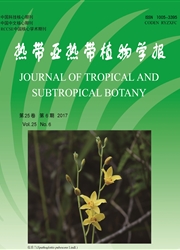

 中文摘要:
中文摘要:
劳动分工是经济进步的发动机,克隆植物也具有与经济学相类似的劳动分工现象。环境异质性、分株专化与合作以及分株潜在的生长独立性是克隆植物劳动分工发生的基本条件。根据发生条件可以把克隆植物劳动分工分为环境诱导型和遗传型两种。克隆植物能够通过利用形态或生理可塑性和生理整合、劳动分工机制实现对生境中异质性资源的有效利用。克隆植物劳动分工的生态学效应在于:提高对局部资源的摄食效率、克服局域资源限制、实现生物量的增益与适合度的提升,上述效应的机理可以用经济学边际成本分析和规模报酬规律来解释。同时,劳动分工还能提高种间竞争力、增强觅食有效性、减弱种内自疏,但同时,克隆植物在不稳定环境下的劳动分工效应也会增加生存风险。随着现代生物学研究手段的不断应用,有关克隆植物劳动分工的研究将会得到更加深入的发展。
 英文摘要:
英文摘要:
Division of labor is an engine of economic progress. A similar phenomenon also exists in clonal plants. The basic conditions for the division of labor in clonal plants includes: environmental heterogeneity, specialization, cooperation, and the potential independence of ramets. According to these conditions, division of labor in clonal plants could be classified into two types, i.e., environmentally induced and developmentally programmed division of labor. Clonal plants can efficiently utilize the heterogencous resources by means of physiological integration and morphological or physiological plasticity. Division of labor in clonal plants could raise the acquisition efficiency of the local resources, overcome the local resource limitation and enhance the biomass and fitness. These effects could be explained by the theory of marginal cost and scale reward in economics. Division of labor in donal plants can also enhance the competitive capacity of inter-specific competition, reinforce the efficiency of foraging behavior, and weaken the effects of self-thinning, The risks of division of labor in unstable habitats also exist. The application of the methods of modem biology, the studies on the division of labor in clonal plants will be promoted.
 同期刊论文项目
同期刊论文项目
 同项目期刊论文
同项目期刊论文
 期刊信息
期刊信息
